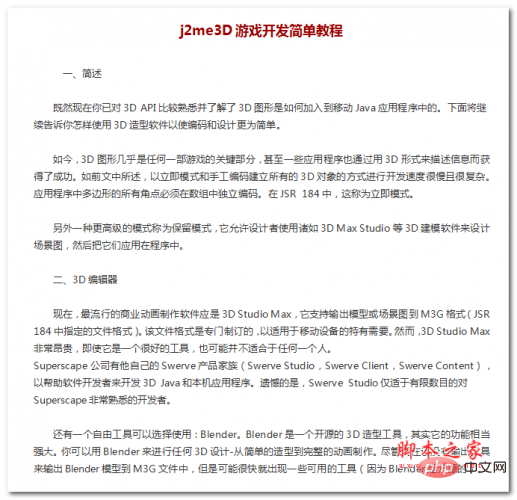
本文将详细介绍如何在Java GUI应用程序中显示对象的信息,特别是如何将Student类的信息(如姓名、职称、图片、组别和演示内容)动态地展示在GUI界面上。通过创建自定义的JPanel组件,并结合JFrame,可以实现数据的可视化呈现。本文将提供代码示例,并解释关键步骤,帮助开发者构建用户友好的数据展示界面。
为了在GUI中显示Student对象的信息,最好的方式是创建一个自定义的JPanel组件。这个组件将包含用于显示学生信息的各种JLabel和JTextField。
import javax.swing.*;
import java.awt.*;
class StudentPanel extends JPanel {
private JTextField tfName;
private JTextField tfTitle;
private JTextField tfGroup;
private JTextField tfDemoWhat;
private JLabel imageLabel;
public StudentPanel() {
setLayout(new GridLayout(5, 2)); // 使用GridLayout方便布局
add(new JLabel("Name:"));
tfName = new JTextField();
add(tfName);
add(new JLabel("Title:"));
tfTitle = new JTextField();
add(tfTitle);
add(new JLabel("Group:"));
tfGroup = new JTextField();
add(tfGroup);
add(new JLabel("Demo What:"));
tfDemoWhat = new JTextField();
add(tfDemoWhat);
add(new JLabel("Image:"));
imageLabel = new JLabel();
add(imageLabel);
}
public void setStudent(Student student) {
tfName.setText(student.getName());
tfTitle.setText(student.getTitle());
tfGroup.setText(student.getGroup());
tfDemoWhat.setText(student.getDemoWhat());
// 加载并显示图片
try {
ImageIcon imageIcon = new ImageIcon(getClass().getResource(student.getImageFile()));
Image image = imageIcon.getImage();
Image resizedImage = image.getScaledInstance(100, 100, Image.SCALE_SMOOTH); // 调整图片大小
ImageIcon resizedImageIcon = new ImageIcon(resizedImage);
imageLabel.setIcon(resizedImageIcon);
} catch (Exception e) {
imageLabel.setText("Image not found");
}
}
}代码解释:
现在,我们需要将StudentPanel添加到JFrame中,并在JButton的ActionListener中更新StudentPanel的内容。

本文档主要讲述的是j2me3D游戏开发简单教程; 如今,3D图形几乎是任何一部游戏的关键部分,甚至一些应用程序也通过用3D形式来描述信息而获得了成功。如前文中所述,以立即模式和手工编码建立所有的3D对象的方式进行开发速度很慢且很复杂。应用程序中多边形的所有角点必须在数组中独立编码。在JSR 184中,这称为立即模式。希望本文档会给有需要的朋友带来帮助;感兴趣的朋友可以过来看看
 0
0

立即学习“Java免费学习笔记(深入)”;
import javax.swing.*;
import java.awt.*;
import java.awt.event.ActionEvent;
import java.awt.event.ActionListener;
class GUI2 extends JFrame {
private final JLabel image2;
private StudentPanel studentPanel;
private Student currentStudent;
public GUI2() {
super("Welcome to 121 Demo System");
setLayout(new FlowLayout());
JButton refreshButton = new JButton("Refresh button to get the next student");
add(refreshButton);
ImageIcon image = new ImageIcon(getClass().getResource("images/xx.png"));
Image imageSIM = image.getImage();
Image imageSIMResized = imageSIM.getScaledInstance(260, 180, Image.SCALE_SMOOTH);
image = new ImageIcon(imageSIMResized);
image2 = new JLabel(image);
add(image2);
studentPanel = new StudentPanel();
add(studentPanel);
// 初始化第一个学生信息
currentStudent = new Student("John Doe", "Full Time Student", "images/john.jpg", "Group 1", "Demo A");
studentPanel.setStudent(currentStudent);
ButtonHandler handler1 = new ButtonHandler();
refreshButton.addActionListener(handler1);
setSize(600, 500); // 调整窗口大小
setDefaultCloseOperation(JFrame.EXIT_ON_CLOSE);
setVisible(true);
}
class ButtonHandler implements ActionListener {
@Override
public void actionPerformed(ActionEvent event) {
// 模拟获取下一个学生的信息
currentStudent = getNextStudent();
studentPanel.setStudent(currentStudent);
studentPanel.revalidate(); // 重新验证布局
studentPanel.repaint(); // 重新绘制面板
}
private Student getNextStudent() {
// 这里可以替换为从数据源获取学生信息的逻辑
// 例如,从数据库、文件或网络获取
return new Student("Jane Smith", "Part Time Student", "images/jane.png", "Group 2", "Demo B");
}
}
public static void main(String[] args) {
new GUI2();
}
}代码解释:
class PersonInfo {
protected String name;
protected String title;
protected String imageFile;
public PersonInfo(String name, String title, String imageFile) {
this.name = name;
this.title = title;
this.imageFile = imageFile;
}
public PersonInfo(PersonInfo pi) {
this(pi.name, pi.title, pi.imageFile);
}
public String getName() {
return name;
}
public String getTitle() {
return title;
}
public String getImageFile() {
return imageFile;
}
public void SetInfo(String name, String title, String imageFile) {
this.name = name;
this.title = title;
this.imageFile = imageFile;
}
@Override
public String toString() {
return String.format("name: %s%ntitle: %s%nimageFile:%s%n", name, title, imageFile);
}
}
class Student extends PersonInfo {
private String group;
private String demoWhat;
public Student(String name, String title, String imageFile, String group, String demoWhat) {
super(name, title, imageFile);
this.group = group;
this.demoWhat = demoWhat;
}
public Student(Student s) {
super(s);
}
public String getGroup() {
return group;
}
public String getDemoWhat() {
return demoWhat;
}
public void SetInfo(String name, String title, String imageFile, String group, String demoWhat) {
super.SetInfo(name, title, imageFile);
this.group = group;
this.demoWhat = demoWhat;
}
@Override
public String toString() {
return String.format("%s" + "group: %s%n" + "demoWhat: %s%n", super.toString(), group, demoWhat);
}
}通过以上步骤,您可以创建一个自定义的JPanel组件,并在GUI界面中动态地显示Student对象的信息。这种方法可以灵活地应用于各种Java GUI应用程序中,实现数据的可视化呈现。
以上就是如何在GUI中显示Java对象的信息的详细内容,更多请关注php中文网其它相关文章!

每个人都需要一台速度更快、更稳定的 PC。随着时间的推移,垃圾文件、旧注册表数据和不必要的后台进程会占用资源并降低性能。幸运的是,许多工具可以让 Windows 保持平稳运行。

Copyright 2014-2025 https://www.php.cn/ All Rights Reserved | php.cn | 湘ICP备2023035733号